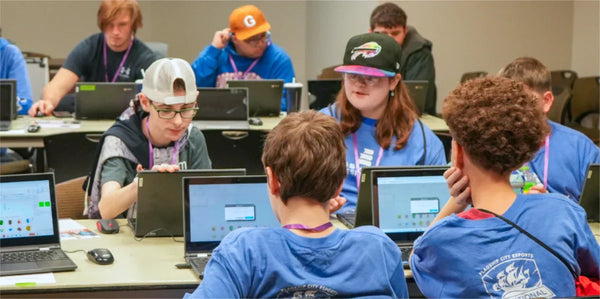
STEAM Career Exploration
In a world that’s continuously evolving, preparing our students with a diverse understanding of all subjects helps them develop the skills and knowledge needed to live and work within our complex society. Today, more and more educators recognize the value that Arts integration brings to STEM education. The Arts transform the way students process, allowing them to harness their creative abilities to problem-solve and critically think. Because of this, our innovators are creative individuals who design, create and experiment. Combining the learnings of STEM with an integration of the arts, these innovators are pioneering a new path towards the future.
So what is STEM, and how is it different from STEAM?
STEM stands for Science, Technology, Engineering, and Mathematics, and is a widely known and accepted term within the education realm. STEAM, however, is relatively new and covers all topics of STEM with the inclusion of the Arts. Many argue that the Arts are just as important as Science, Technology, Engineering and Mathematics and should be taught equitably alongside these subjects and not in service to. Thus, transforming STEM into STEAM.
Why is STEAM so important?
Since Art naturally encourages curiosity, learners can develop creative thinking skills that allow them to see real-life problems from a different perspective. The Arts are a critical component of innovation and are often overlooked during the design process. That’s why now more than ever, the Arts are gaining more recognition in learning environments throughout the country.
How does this relate to careers in the real-world?
Because the job market of the future is one that is continually changing and evolving, our learners must be flexible, creative and innovative thinkers. As they begin to explore their interests and passions, it’s crucial to keep in mind that jobs they may be interested in pursuing don’t exist yet. But that’s ok! As technology continues to advance, these jobs will continue to emerge, allowing them to explore a world of possibilities.
STEAM Career Series
Designed to help you start conversations with your learners, this series explores a world of careers. From animation to drone production, the sky is the limit! Join us in this five-part STEAM series as we inspire learners to think about their passions and interests and how they can transform that into a career. Explore each blog article below:
- Part 1: STEAM Career Exploration
- Part 2: Science
- Part 3: Technology
- Part 4: Engineering
- Part 5: Arts
- Part 6: Mathematics
Join In!
Do you know of any STEAM careers that are out of the ordinary, exciting, or just downright awesome? Maybe you’ve got the inside scoop on a career you’ve worked in! Let us know in the comments below or email us at pcs@edventures.com to be featured in our series as we dive further in career exploration with STEAM!









1 comment
I would like to see, Erosion tables for students to learn how rivers, oceans and streams move and erode land.
Kits about ecosystems – who wildfire effects eco system’s or other natural disasters effect them.
Weather kits
Ecology kits
Pollution kits
Love your programs and curriculum.